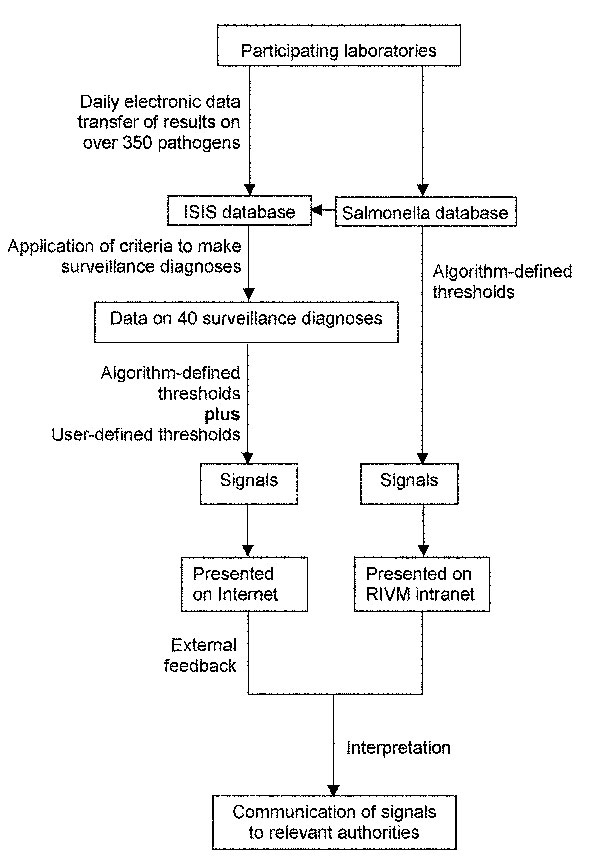Volume 9, Number 9—September 2003
Perspective
Automated, Laboratory-based System Using the Internet for Disease Outbreak Detection, the Netherlands
Figure 1

Figure 1. Flow diagram showing flow and processing of laboratory data in the Infectious Disease Surveillance Information System (ISIS) and means by which signals generated by the ISIS database and the Salmonella database are created and handled. RIVM, National Institute for Public Health and the Environment, Bilthoven, the Netherlands.
1Example 1: A surveillance diagnosis for a case of respiratory syncytial virus infection is a positive culture or positive polymerase chain reaction (PCR) or positive direct immunofluorescence or positive enzyme immunoassay, with all positive tests on the same case-patient within a 6-week period reported as one surveillance diagnosis. Example 2: A surveillance diagnosis for a case of invasive Haemophilus influenza infection is a positive culture from a normally sterile site, with all positive results from the same case in 3 months considered one surveillance diagnosis.